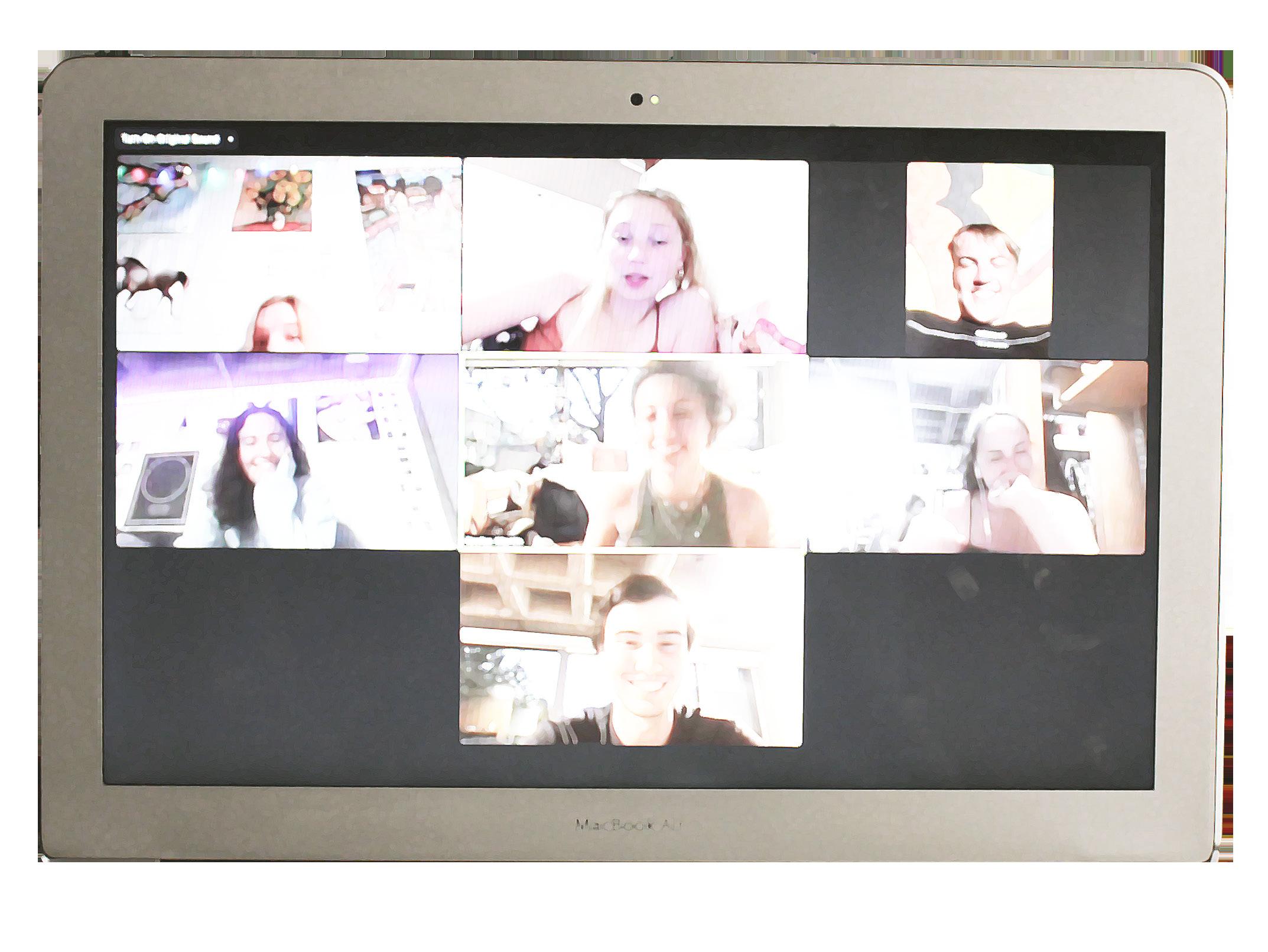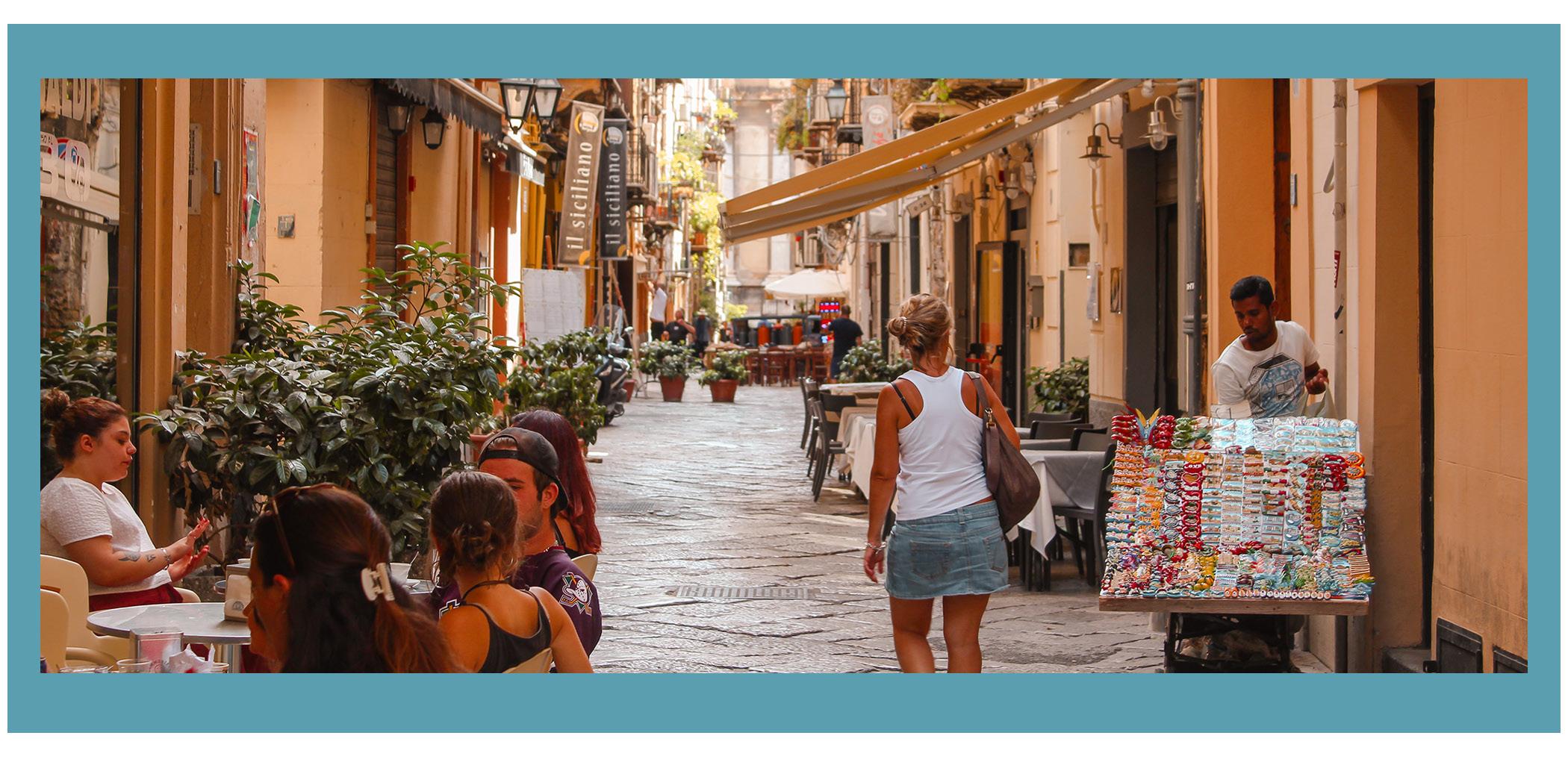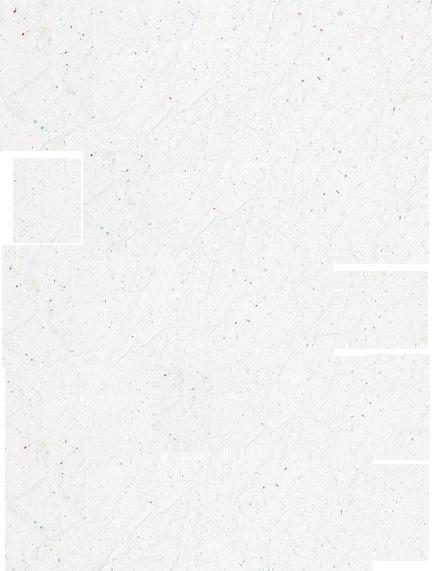
41 minute read
highlighting student musi
Nicolette van Kesteren
Advertisement
Unbeknownst to myself and others without the chance to experience pre-COVID Hamilton, the music scene is a huge part of life on campus. Not only is there a huge community within the music department, but there are many students on campus currently creating their own content on Spotify and other music platforms. Hoping to understand how these students began their musical journey and how different factors affected them and their music, I sat down with student artists Andrew Little and Ben Leit. They talked about their experience producing music and the difficulties they have found surrounding collaboration and COVID restrictions.
What got you into music and music production?
Andrew Little: I have been obsessed with music for as long as I can remember. I’d hear things and then I’d try to play them. My friend in high school showed me how to make a beat on his iPad. When I got here, I bought a computer, downloaded Logic Pro, and started taking classes. I played with Garageband a lot as a kid, so it was like being a kid again. It’s just experimenting with sounds, taking what you like, and putting it together.
Ben Leit: My dad got me into music at a very young age. I grew up in Queens. My mother is completely tone deaf and just completely musically illiterate. My dad raised me on The Beatles, The Beach Boys, and a lot of jazz. I was always surrounded by music. I took guitar lessons at 3. I couldn’t physically get around the guitar - it was too big for me, which sucked. I remember that being the first time I felt defeated, because I was so interested in it. I took piano lessons from 7-12, and then I stopped when I got to middle and high school. I was just playing baseball for years and years, but taught myself guitar in the meantime and continued doing musicals to train my voice. The only thing I refuse to touch is acapella just because instruments are so cool.
What are your creative processes like, and what inspires you to create?
Andrew Little: Honestly, I just listen to music and walk around a lot. I love sampling things, so I like to listen and just record things. My creative process comes a lot from procrastination. It’s just me sitting in my room trying to focus on school work, and I usually end up getting distracted because all my music equipment is right there. I’ll jot down the lyrics or little sounds and, over time, I’ll piece them all together into a project.
Ben Leit: I don’t know. It’s just fun to play music. It’s fun to express yourself in any way particularly as I have spent time playing more instruments. I have found that I am able to articulate things better on an instrument than in words. In terms of creative process, creativity just comes to me from hearing a “perfect” song. I remember hearing Frank Ocean’s “Self Control” for the first time, and that was a big turning point for me. I don’t know how it was made, but it captures an emotion and doesn’t feel mathematical in any way, which is what music is all about. Essentially, trying to chase after something one can’t get.


How do you feel that life at or being at Hamilton has affected your music?
Andrew Little: [At Hamilton], there are so many different bands with overlaps of friend groups and groups of people. We would always get together and listen to each other. There were always concerts at bars downtown. That was how I learned the most about music: just being able to see my peers play their instruments and their genres of music in their ways. I learned a lot just from watching and listening to others. Even acapella, I learned a lot about singing from watching other people here sing. I think there is a great environment of musicians whether it be bands or producers. It’s a great network.
Ben Leit: The community on campus is fantastic. Being talented here is common. Being hardworking is common. I found that people are more collaborative than competitive, which is really important. You shouldn’t be competitive about art. It’s just you trying to say something, rather than through, for example, a sport. Ryan Carter is a genius. He’s totally valuable to this school in every way. He is a fantastic music professor. He captures a category of music production and modern music that is not covered anywhere else in the curriculum. He’s taught me everything from music theory to sound design.
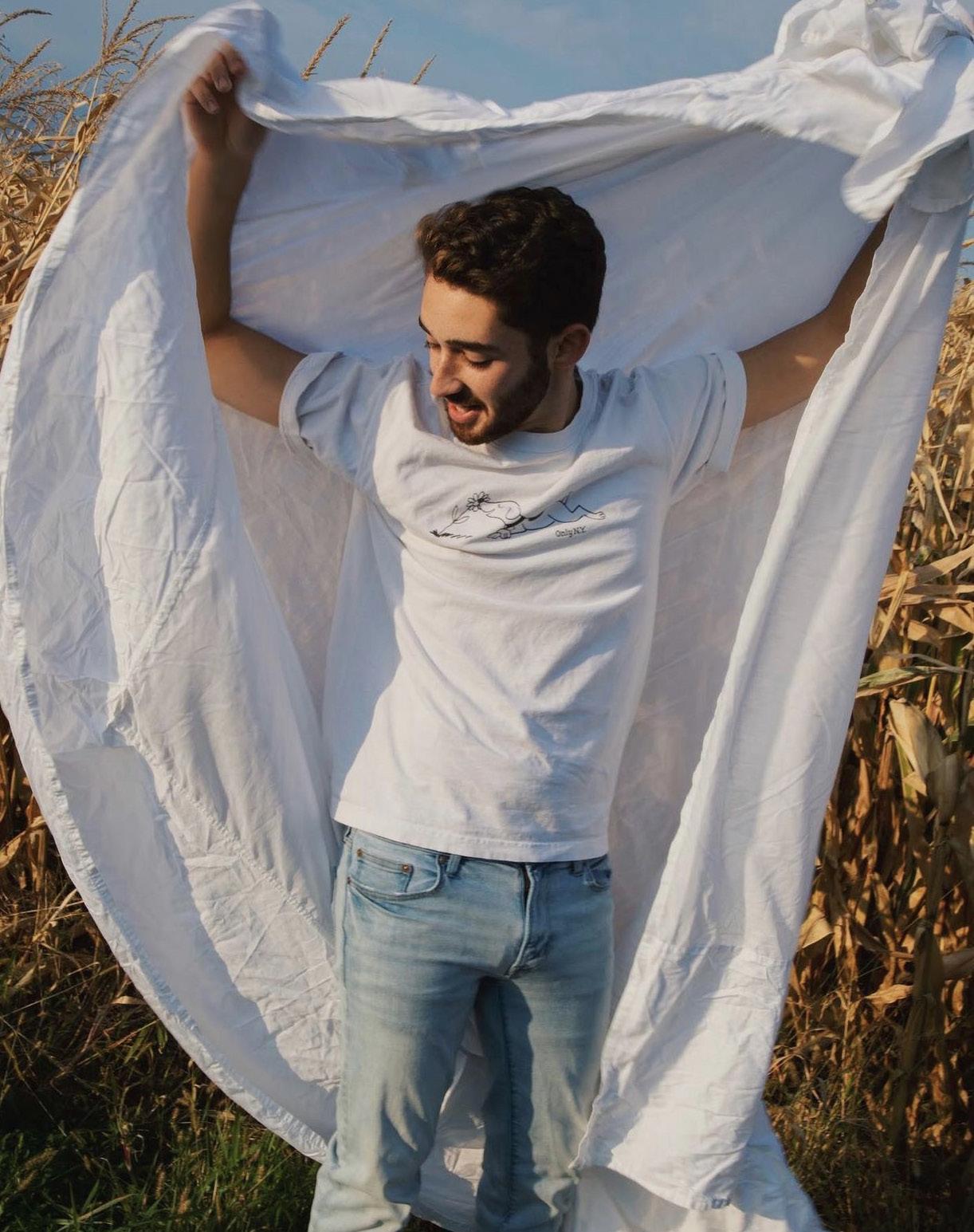
How have you been able to collaborate with other artists during COVID? How has COVID and quarantine affected your music more generally?
Andrew Little: We do use Logic files and that type of thing. I have friends of mine just send audio files of them recording into their Apple headphone mic, and you just mix that a certain way. It has been a lot of fun to push the boundaries of how recording is normally done. It’s really bad to record into a phone or into a headphone mic -audibly, at least - but it kind of gives it a homemade feel. The pandemic has led to a different sound, but I don’t think it’s bad. It’s like a mix of emailing a lot of stuff and just using our phones and whatever we have available to make what we got.
Ben Leit: It is tough to collaborate in person, legally. There’s nothing like having a couple people in a room and getting to bounce things off one another, but it’s very easy to send files around. I wouldn’t say the pandemic has influenced anything I’m doing, other than the fact that it has just given me time to do it. I’m privileged enough to go to Hamilton,
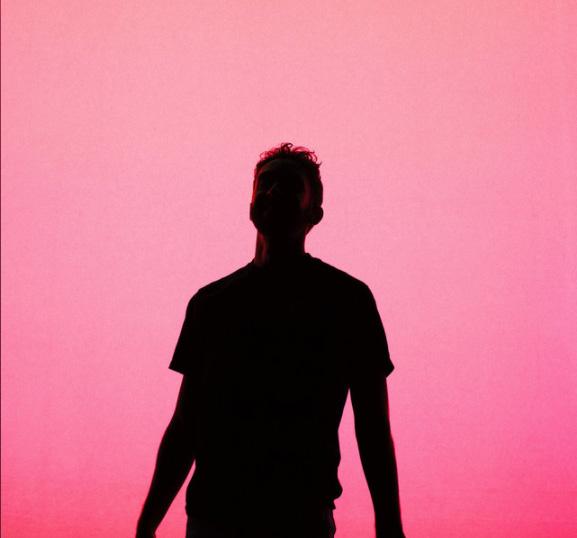
and to have the resources and the education to learn this stuff. Having found myself with a good deal of time, I may as well spend it doing something.
What artist has been the most inspirational for your music?
Andrew Little: It fluctuates a lot. The artist that got me into production the most was Tom Misch. The way he made music was exactly the way I wanted to get into it, which was just idea by idea: layering together things that sound nice.
Ben Leit: Probably, John Lennon. I was just raised off of so many Beatles songs, that I would just gravitate to his kind of rhythm and melody. Or maybe Jewish temple music, just because so much of my childhood was spent in a room with old Jews and someone banging on an organ.
What was it like collaborating with each other?
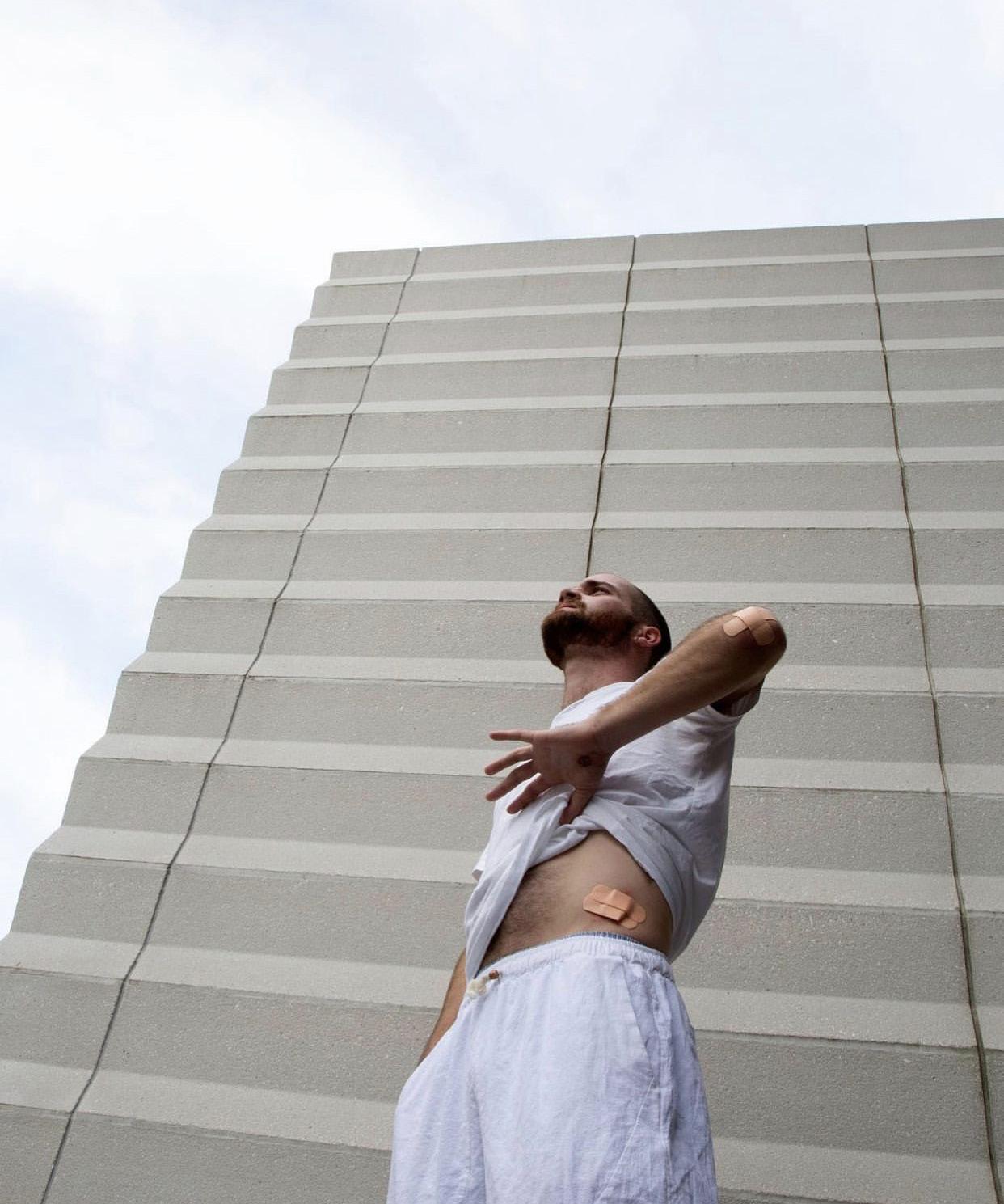
Andrew Little: It was a lot of fun. We did that over the summer and throughout quarantine. I have known Ben for a couple of years. I got to open for Ben my freshman year. That’s how I met him and got involved in the music scene here. We did it all remotely, so it was fun to actually get to finish the song in person. We finished it last fall. We were literally just emailing Logic files back and forth. I produced most of that beat, so he just sent me a drum beat and I added the 808s. He had a little bit of piano in there as well. It was a piece by piece effort.
Ben Leit: Andrew is awesome. He’s a very talented and hard worker. I’ve known him since my second month freshman year, and he’s great. He’s filled with ideas. It was really us just being in our rooms all summer and working on parallel things. We would send each other ideas or little snippets of a chord progression. Eventually, it was just a stupid piano loop, a kick, and a snare. I sent it over to him, and he completely changed it; he had a melody idea. We worked on that for two months.

Andrew Jillings: Career, Campus, and COVID-19
Jack Sullivan
Car doors slam, bags unzip, roommates shake hands. A final hug sends teary-eyed parents returning to the road, as a neophyte freshman - only partially at terms with their “adultness” - wonders what, or who, will come next. That who, of course, is Andrew Jillings. Arriving on the Hill in 1997, Jillings’ impassioned presence remains resonant in the recent, or perhaps distant memories of Hamilton students and alumni alike. A solidified rite of Hamilton’s orientation week, Jillings’s position as Director of Outdoor Leadership finds him leading, organizing, planning, and creating: often somewhere in the woods, and never without unmistakable zeal. His career in Clinton extends farther than the majority of current Continentals have lived; yet his reliably booming exclamations - always sanguine, and always valuable - indicate no loss of enthusiasm nor volume. This Spring, The Continental asked Jillings about his career within outdoor leadership, his love of Hamilton, and his general experience throughout this last pandemic-year.
You arrived at Hamilton 24 years ago, despite living abroad. What did your path to Clinton - and your current position - look like?
ain’t. You can look back and see how everything connected together, but while you’re looking forward, it’s never straight or clean.
I had come to this country originally to work at summer camp almost entirely by accident; it was just something to do when I was a college first-year. I had applied to work at summer camp, and happened to randomly end up at a really good one in New Hampshire. It had a whole progressive program that allowed me to keep working - it ended up lasting for 10 years - and go on increasingly difficult trips and do more responsible things, generally. I was really lucky to get that introduction to outdoor education, and I was able to do lots of different programming and trips, eventually even designing my own trips.
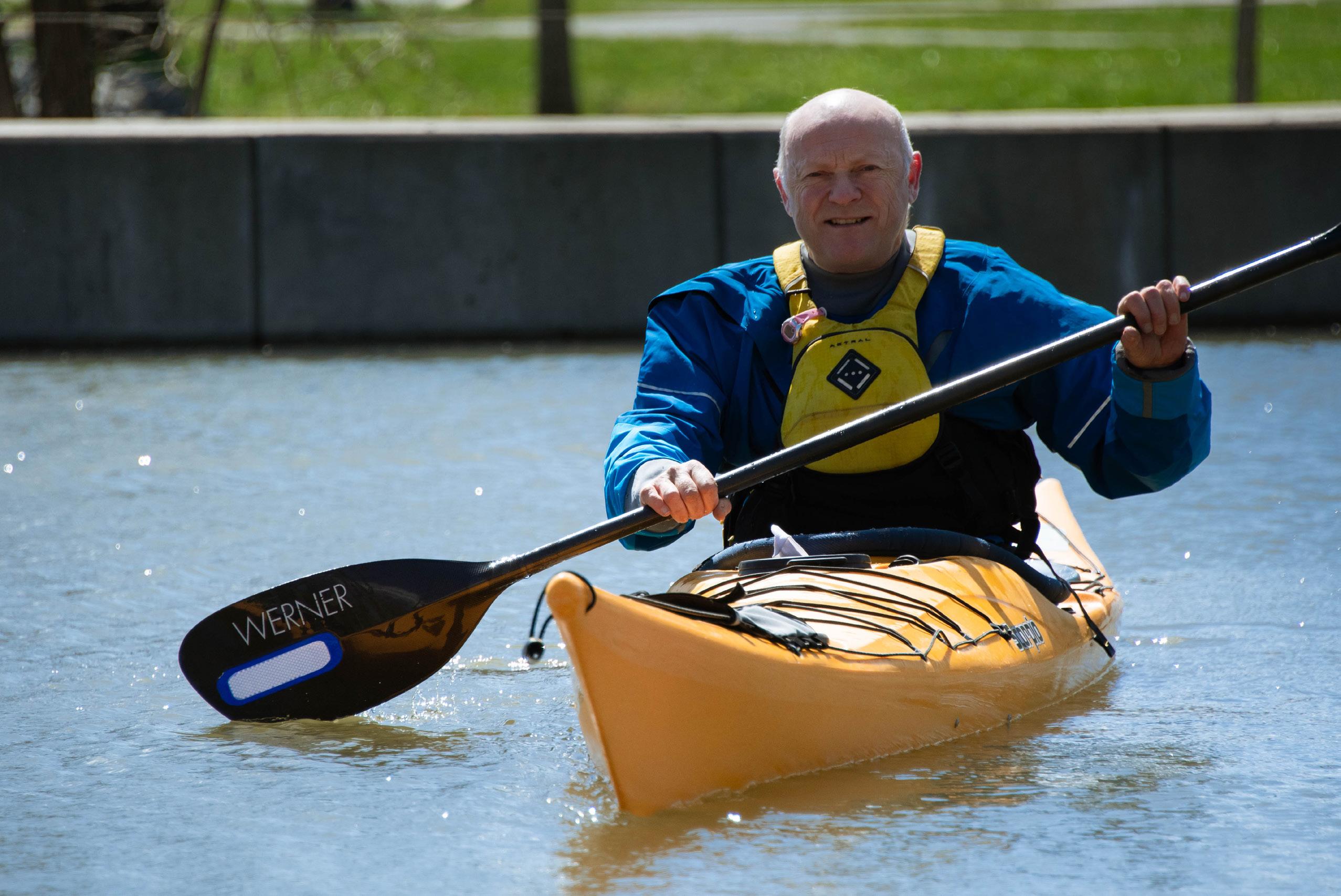
Next, I got involved in higher-ed. I paid for gradschool by working in a dorm at a big state university; I was somewhere between a Resident Assistant and an Area Coordinator. That experience got me another job in res-life, which ended up getting me this job.
My job is one-hundred percent outdoor-ed, but it very much works in the division of student life. You need to be able to talk that language; working with students is a large
part of the position. That’s an interesting venn diagram, how that overlaps. I’m a big fan of venn diagrams, and I think when you look at it as “these two things need to come together”, you start to see that the people who fall in the middle are those that end up in this job. So I’m not a typical outdoor educator. I’m not a typical student administrator. But I can do both.
Clearly, you’ve found something you’re extremely passionate about - the outdoors, activity, adventure - and, not only have leaned into that passion, but have turned it into a profession. What advice would you give to the Hamilton student trying to locate or honor their own passion; to “know themselves”?
I think you need to make a very conscious decision to do that -- because it’s a double-edged sword. On the one hand, doing your passion as a job prevents it from being a job. That Mark Twain quote: “Find a job you enjoy doing, and you will never have to work a day in your life.” Yes, that’s true, and it doesn’t feel like work a lot of the time. On the other hand, it doesn’t leave anything for recreation. So, what do I do on my own when I’m not at work? If I do the same things that I’m doing at work, it gets confusing. It’s not recreation - the word recreation, literally, is re-create - I’ve been worn down by work, and now I need to re-create myself, or rebuild myself, in my recreation time. But if that’s the same thing I’m doing at work, then it’s not going to feel like I’m “recreating”. This is a word of caution in turning play into work, and work into play. I have examples in my life where things stopped becoming “play”, and I’ve made an effort to hold back some of my personal stuff and not make it my work, just to keep it for myself. I grew up sailing, and I love sailing, but I have no intention of taking you, or any other student, sailing. I want it for me, and to separate it from my work. I would’ve given a different answer in my 20s, or early 30s; it’s definitely changed with age. I look back, and think: “yeah, maybe I should’ve kept that for myself.”
24 years later, you’ve still stuck around at Hamilton. Why?
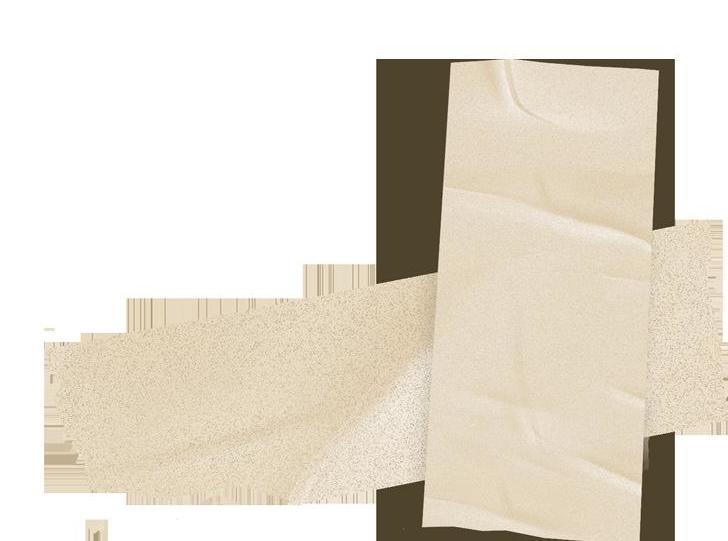
Hamilton is the best place to work. I’ve been “headhunted” by other institutions, but there’s never been any actual temptation to leave. This is a great company to work for, of course. But, more importantly, it’s the people I get to work with. It’s the students. It’s the biggest privilege of anyone’s life to sit and chat with you, and get paid for it. Hamilton students are great, and we get a fresh set every year. That being said, Hamilton is also great because, for the most part, they let me get on with it. They give me plenty of funding to do it, and they allow me to try new things and to run my own gig. And I’m very lucky for that. I have lots of friends that do this at other colleges, and we talk all the time. We know what’s going on at other places - I don’t want to jinx myself - and this is a great place to work.
So, you would say, responsibility-wise, Hamilton is more hands-off in terms of what you can do with your programs?
Yeah, generally. And there’s always failure now and again. I’ll try something and it won’t work, or I’ll try and do something and I’ll get shut down. But that’s part of working anywhere. That’s fine. If I’m not getting turned away every now and again, I’m not trying hard enough to be creative and experimental. One of my weaknesses is coming up with too many new ideas...I’ve always got new ideas. There are program graveyards all over campus. I can point to different trees, and say, “Oh, I tried to build an ice-climbing wall in that tree in 2004, and that’s why it’s leaning over like that.” There are stories like that, of things I’ve tried to do in different places that didn’t work. But, of course, there are places where things worked brilliantly. It’s part of the fun: that I’m allowed to try.
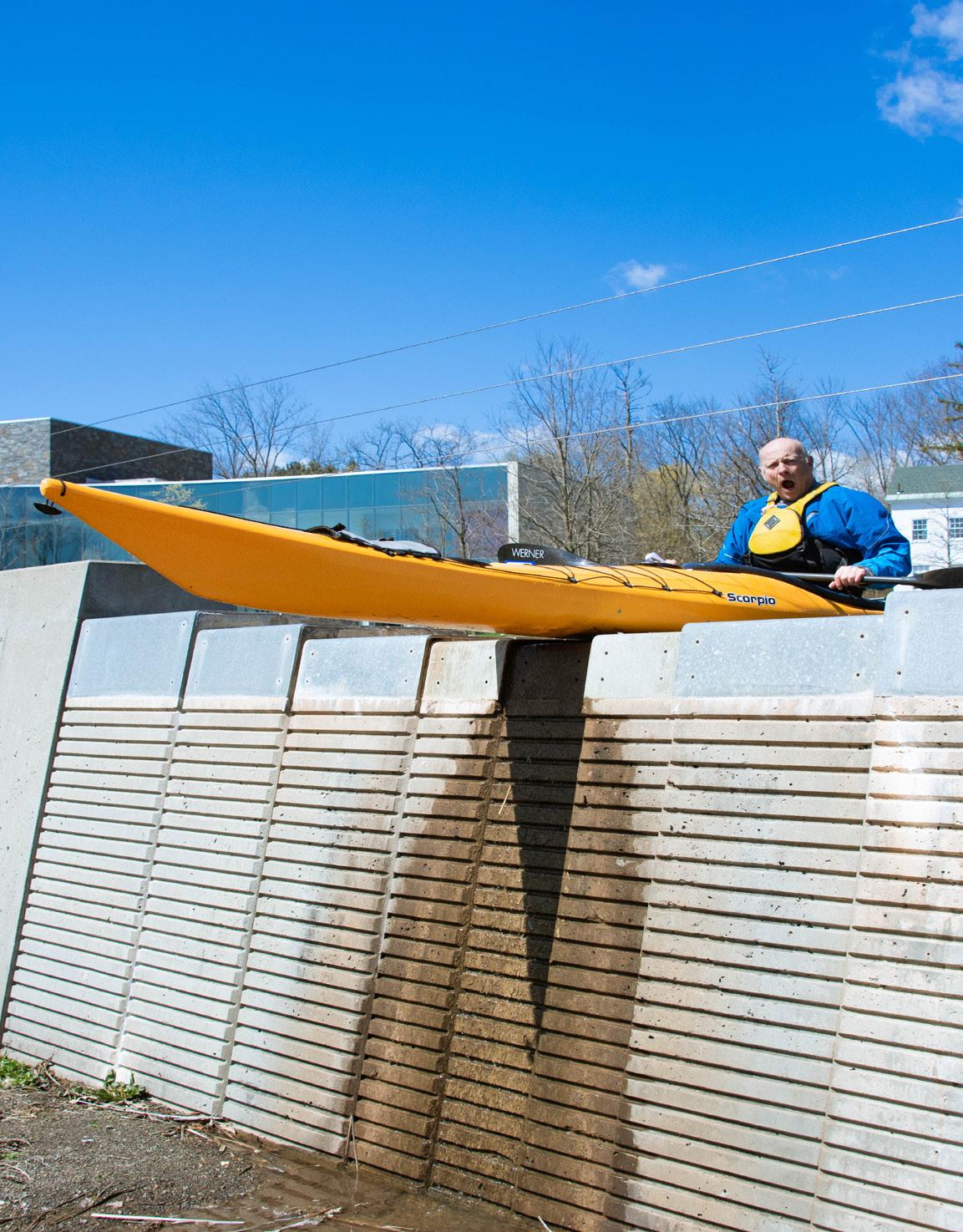
Over spring break, Sarah and I had done this trip to Nepal. We were scheduled to go - our fourth year in a row - and everyone was signed up, and everything was paid for. We were going to go. And in February, when COVID-19 was hitting everywhere else, we looked at the Nepal trip and said, “we can’t do this,” so we cancelled it. I was lucky in some ways, because I came to terms with the severity of COVID slightly earlier than others, as this cancellation was weeks before the in-person classes were stopped. I had it in my head: the experience of saying no and turning something down, and being very disappointed, and disappointing other people. It sucked. I had already had that runthrough, so when that week in March came, I think I was less surprised than some. But, of course, I was just as sad as everyone else. I had to spend a day in the Annex, if you remember, with people trying to work out travel arrangements. I had to turn people away who wanted to stay on campus. It was one of the hardest things I’ve ever done. It was miserable. No one was having fun. No one in that building. My strongest memories of that time are from the Annex, meeting student after student, saying, “no you can’t, no you can’t.” And then, after that, there was a long period of uncertainty; of not knowing what we didn’t know. We didn’t know that we weren’t going to come back for a year, and that orientation trips would be cancelled, and that we’d have to plan something completely different. The not-knowing didn’t help.
The student body then received an email detailing all our new regulations - masks, distancing, family units, and Emocha - to then prepare their arrival to campus. As Director of Outdoor Leadership, what type of changes did you have to make to your programs?
Nearly 100 percent of my job required change. We changed nearly everything we did. And almost everything we did in August was new. There was very little that we had in place that could apply moving forward. It was easy in the sense that we knew we couldn’t do any of the normal things; we couldn’t go off campus, we couldn’t lead trips, we couldn’t develop this or that. So in a way it was easy to put all that to one side and say, “we’re done with that.” Now, clean slate: what can we do, and how can we do it? Still, some of it was fun. Creating programming around the bicycles that we had, for example, was fun. Creating programs around the on-campus campsite was fun. Creating trips that people could lead was fun. Creating the arsonist-group to have campfires in the backyard was really fun. To be able to sweep everything away and start afresh, actually - with no real expectations from the students - was fun. We could’ve done anything, it could’ve been anything. It’s part of what we do anyway; we’re good at doing new things. It’s part of being an outdoor educator: adapting on the fly, and making quick decisions. We can make a plan, but we’re also always ready to throw it away. We’re good at that.
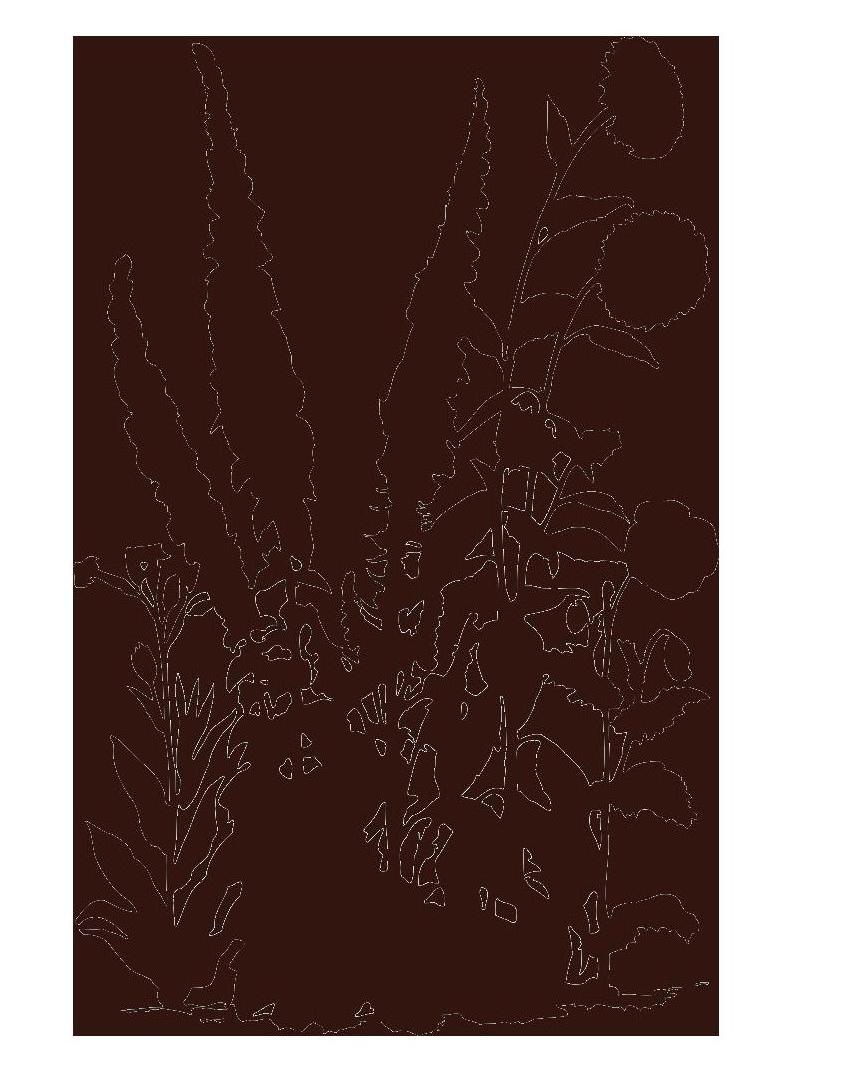
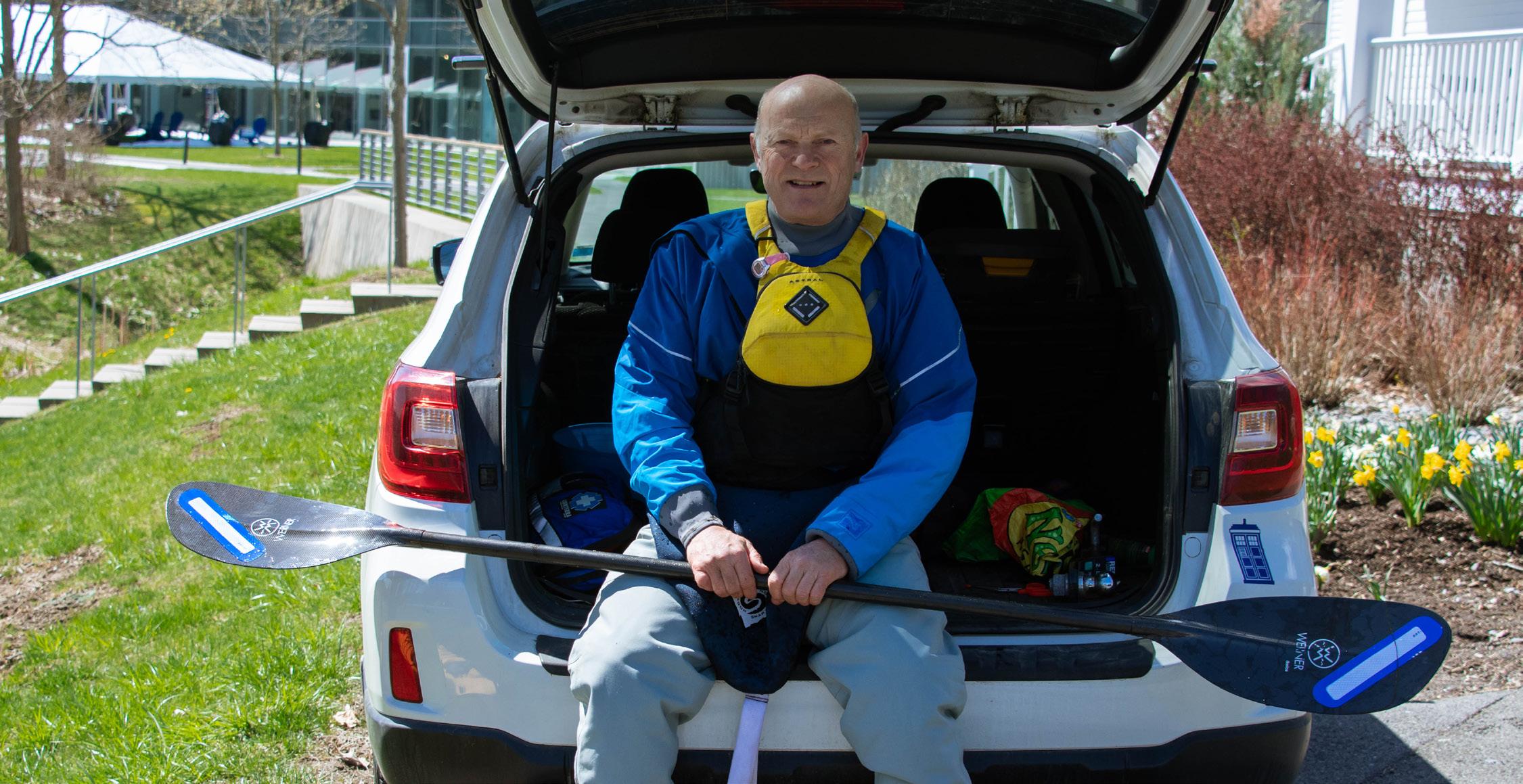

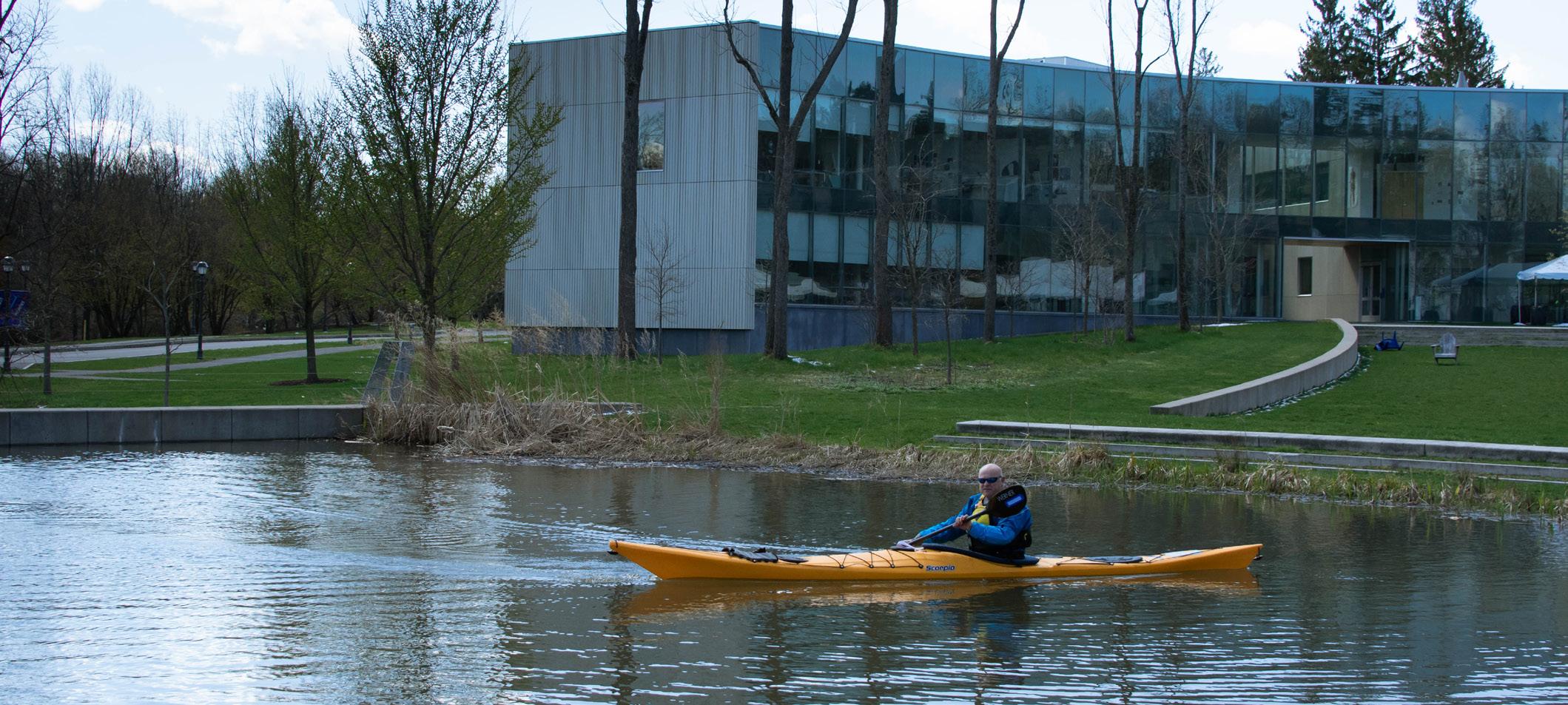
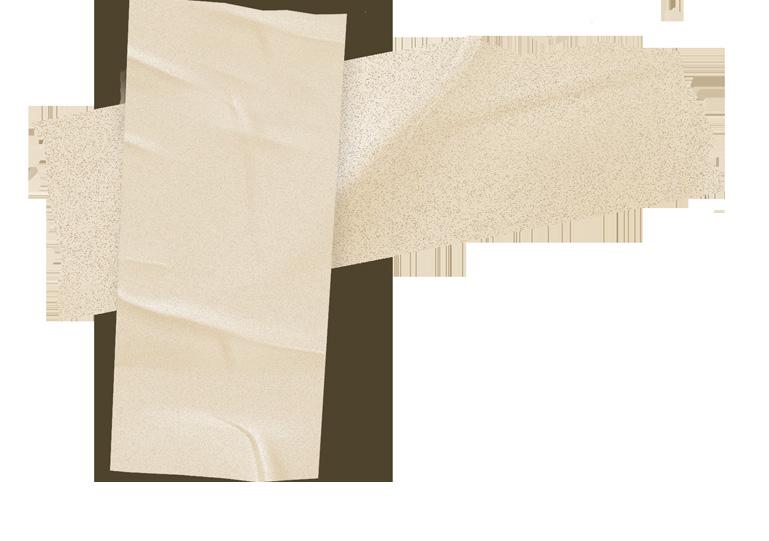
Now, I need to bring this up, because this was a highlight of last semester for many: what’s the story behind that plastic table in the woods?
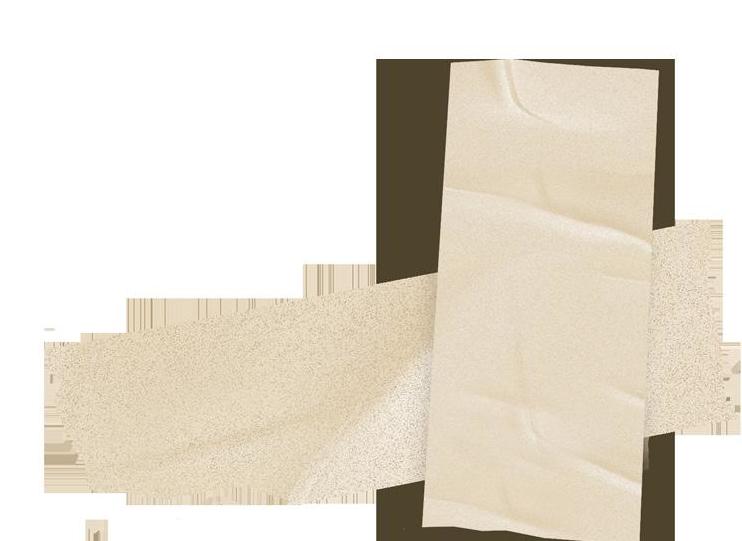
I will say, it’s another privilege of this job that I get the ability to write emails like that one. I’m lucky to not have to write the ones administrators have to write. I don’t have to write grown-up. I can write to you about making a mess in the woods, and I can do it in my style, which is different. And I can always appeal to your sense of humor. I know you guys have a good sense of humor. If I can hit that student sense of humor, there’s going to be more learning per word through humor, than through discipline. So, the fact that I had just seen an 8-foot plastic table in the middle of the woods was just the setup. I can’t not talk about the table. And it worked! The next day, the table was gone, and almost all the garbage that was in the Glen was gone. I don’t know if the person who put the table there took it out, or if other people who were embarrassed for that person took it out, or if people who just wanted it gone removed it. I don’t know, but the table’s gone.
Moving into this Spring semester, the Hamilton student body has continued to follow COVID guidelines. Cases are dropping in the U.S., and the weather is getting nicer each day. What recommendations do you have for Hamilton students (in terms of activity) over these next few months?
It’s always encouraging, going out on a walk on a warm day, to see a ton of students spread out over Minor Field. That gives me faith in the future of humanity. People just want to be outside, and to feel the heat of the sun. That’s really important. So for those people who are thinking about whether it's worth it or not - to make the effort to get outside - it is. Next time, do it. Find something to lie down on, and get outside. Science is unequivocal on the health benefits of being in the woods, of being outside. It hasn’t perfected exactly what that means - whether the woods is specifically better than simply breathing fresh air - but we do know that being outside is good for you. It’s prescribed in some countries, and it should be a prescription in this country. Part of your mental and physical wellness requires a walk of the Glen loop. It’s another reason I’m still here: we have all these acres of woodland, all these trees and trails you can walk on. And you should. You should do it because it's healthy, and you should do it to the best of your ability. Listen to the sounds of nature, or listen to your AirPods. Just get out and walk.
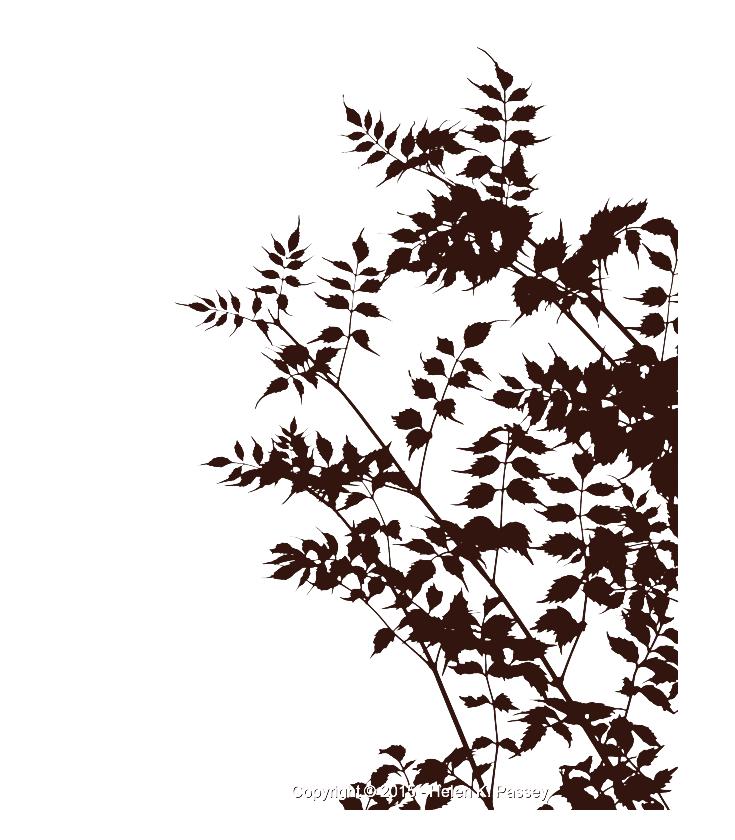
As you said, outdoor activity is known to be a great exercise in improving mental health and wellbeing. As someone who lives and breathes the outdoors, what sort of final advice might you have for the stressed, overworked, or potentially bored Hamilton student?
I encourage people to explore their boundaries of adventure. We have comfort, we have adventure, and we have misadventure. Find the area that is adventure, and learn how to define what that means for you. To some extent, the only way to find that boundary is to nudge it. Don’t crash through it, of course: but, if you’re used to walking around one certain trail on the Glen, maybe try a more difficult one. Maybe go off the trail. And maybe even crash through the trees. 14
r/hamnudes
In one of the internet’s darkest corners (Reddit), there exists “a place for Hamilton College students to get thirsty.” This sensual oasis is commonly known as HamNudes. Since its original conception (haha) in March 2020, at the beginning of the pandemic, the subreddit has garnered over 140 members, including current students and alumni. We reached out to some of these adventurous individuals to learn more about them and the platform.
Why did you decide to post on HamNudes?
u/ananattania 4h
A friend told me about HamNudes when I had just started an OnlyFans and was looking for a way to promote. I also have an exhibitionist side, and I subtly wanted an ex to find my sex work social medias, so that was a secondary factor.
u/NymphofIce 3h
External validation.
Why did you decide to post on HamNudes?
u/ananattania 4h
I’m an alumna, so I’m fairly sure I don’t know the majority of people posting. Someone who came on to me freshman year did recognize me, though, and messaged me. I also find certain Hamilton references a little funny, and they make me nostalgic. For example, I captioned one post with something along the lines of, “Am I light side or dark side?” and someone commented, “Hopefully light side in my Dunham room.” I am full-on dark side, so it made me chuckle.
u/NymphofIce 3h
The other posters are really great people, and I have talked to a few of them before. The people who don’t post but comment or follow you can be creepy, especially if they message you.
Have you received any backslash/negativity for your content?
u/ananattania 4h
There was one time when I posted something about buying my content, and someone replied, “Porn is free,” but that was the extent of the backlash. For the most part, it seems like a pretty positive community.
u/NymphofIce 3h
I haven’t personally received any backlash. I am a female though, and I know some of the guys who post receive negativity or people try to doxx them.
What do you think of Hamilton’s campus culture in terms of sex and relationships?
u/ananattania 4h
Very toxic, but I don’t even know how to elaborate. I think there is a suppression around any sort of display of emotion, but I think that’s true outside of Hamilton as well. I didn’t “hook up” with a lot of people while on campus, but I remember always feeling afraid of coming off as too invested in whoever I was interested in or hooking up, because it seemed like people operate on the premise that any emotion equals you like them equals you absolutely must have a relationship. In reality, I think that even relationships that are exclusively sexual can have emotional components without it becoming a relationship. People at Hamilton seem terrified by relationships. However, most of my experiences are from outside of Hamilton, so I’m also not the best judge. One thing that definitely sucked, though, was that weekends or nights out always seemed centered around finding someone to hook up with, instead of just having fun with your friends, and I think that killed a lot of potentially great memories.
u/NymphofIce 3h
I think Hamilton has a not-great hookup culture, at least for me. Luckily, I am now in a committed relationship and no longer take part.
POVERTY & TAXES IN A PANDEMIC
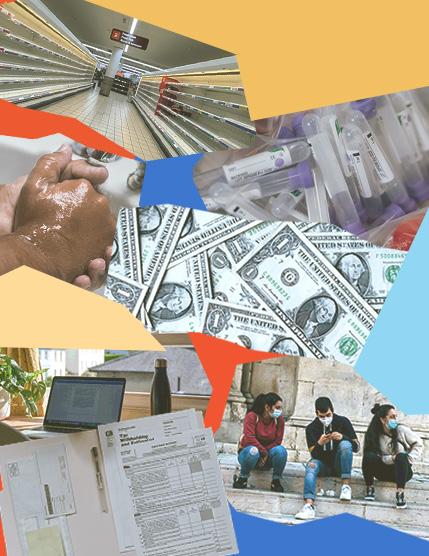
BY ELISE WILSON
According to the Pew Research Center, the U.S. unemployment rate reached a record high of 14.8% in April of 2020. The center found that “from December 2019 to December 2020, employment in low-wage occupations decreased by 12.5%, compared with a loss of 5.3% in middle-wage occupations and an increase of 0.4% in high-wage jobs.” Although the unemployment rate has since dropped substantially, the labor market is still facing related disruptions that disproportionately affect low-income people.
Doing taxes (and doing them carefully)––not the most riveting or glamorous task––is a necessary evil, especially this year as the COVID-19 situation has made receiving benefits from tax returns crucial for low-income people.
In Economics 235 and 236: Policy, Poverty, and Practice, taught by Professor Morgan-Davie, students help local residents do their taxes. Students work with the IRS Volunteer Income Tax Assistance (VITA) program to virtually perform tax returns for mainly low-income taxpayers following their obtainment of program certification. This course is in connection with Kristen Synakowski, Financial Stability Initiatives Manager at the United Way of the Mohawk Valley, Inc. who runs the local VITA program.
For some, receiving benefits like the Earned Income Tax Credit, which provides low to moderate income earners a small supplemental income, might be the difference between making ends meet or not. According to the Center for Disease Control, “In 2017, the EITC helped lift about 5.7 million people – including about 3 million children – out of poverty.” But taxpayers only receive this type of benefit if they choose to claim it because they recognize that they qualify. This is where VITA program participants, including those from Economics 235 and 236, step in and help ensure earners get the assistance they are entitled to receive.
One student spoke about some of the challenges that come with the program: “the people with whom I have worked have been appreciative of our help. It has been difficult at times, especially with older clients who have trouble uploading documents virtually and using the software to video chat. I have also worked with people who do not speak English and it is also a challenge,” they commented. The student went on to express how they felt their work has been impactful, adding: “the program is really important to help low-income people and their families. By filing taxes, I was able to single-handedly ensure that a family was able to get their stimulus payments.”
The course also surveys different topics and their intersection with poverty, such as health, depression and mental illness, technology, the environment, and more, connecting students’ VITA experience with broader trends. With this tax season coming to an end soon, students are working hard to slightly ease the tax burden on earners in these stressful COVID-19 times and learning a lot in the process.

By Sam Zachar

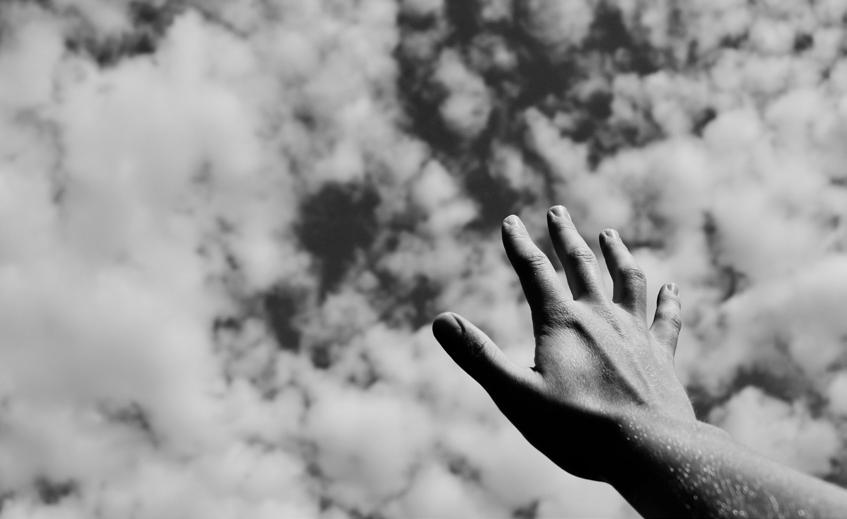
Returning to campus after an extended winter break, I felt defeated. Last semester, the Executive Board of Minds for Change worked hard to improve the mental health of the student body, and it felt as if we failed. Under the leadership of Erin Bryant and myself, our organization created a survey to assess the feelings and needs of students, presented the data we collected to the Student Assembly, and drafted a petition demanding Hamilton’s administration to work with us to boost student mental health. We later met with members of the administration to discuss the petition.
About a quarter of the student body responded to the Minds for Change survey. The results indicated that during last semester, over 70% of respondents felt anxious and over 80% felt stressed and burnt out. More than 70% of respondents felt unsupported by the administration. We included a space at the bottom of the survey for respondents to vent. According to one student, the pandemic was affecting students’ lives “on a fundamental and traumatic level,” and yet the administration “only cares about maintaining their image as a school with high levels of academics.” Other respondents discussed how the condensed semester in combination with a lack of breaks led to an extreme increase in workload and stress. Some students felt frustrated that the administration made these decisions without accounting for their potential impact on our mental health.
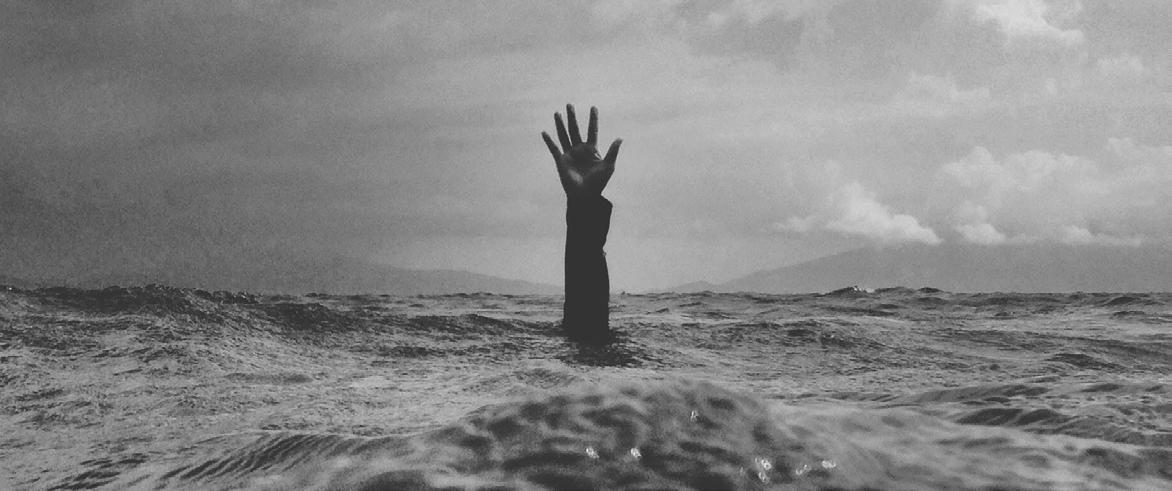

After collecting this data and drafting a petition, we finally got the attention of the administration. The Minds for Change Executive Board met with President David Wippman, Vice President and Dean of Students Terry Martinez, and Dean of Faculty Suzanne Keen for an hour on Thursday, October 29, 2020. For the first 40 minutes of the meeting, the administrators told us about everything they were doing for student mental health. It wasn’t until the last 20 minutes of the meeting when the Executive Board had the opportunity to discuss our recommendations based on the survey results.
We heard nothing from the administration following our meeting regarding our suggestions. Last semester, they did not designate a mental health day or appear to coordinate with faculty to lighten students’ workload.
It wasn’t until the beginning of this semester that we learned about the positive impact of our work. Amanda Kim, a member of the Student Assembly, told me, “as one of the students who discussed student mental health with the faculty last semester, I’m beyond grateful to Minds for Change for their ceaseless efforts to support student wellness. The survey data they shared with us made a huge impact and gave us tangible statistics to discuss with faculty. The professors we spoke with were deeply moved and upset to see how much students seemed to be struggling. We also got a lot of positive feedback after our meeting from students who said that their professors made it a point to begin mental health check-ins and even modify their syllabi to decrease workloads after seeing the Minds for Change data.”
Student Assembly also shaped the movement to improve student mental health. When asked to comment on the mental health resolution Student Assembly passed earlier this semester, Saphire Ruiz, President of Student Assembly, said, “in a process that involves over a dozen different students both on and off of Student Assembly, we produced an 18 page mental health resolution requesting specific changes from the college in order to improve student mental health. We were able to achieve some key victories like wider publication of mental health resources on campus, publishing of counseling center availability, increased participation in the light week and wellness day from professors, staff, and student organizations, and overall adjustment of the College’s approach to enforcement; away from strictly punitive measures, and in the direction of providing incentives to students. One example of this is that we were able to get the tone of testing reminder emails to be less hostile and more friendly. Overall, things have definitely improved, but we still have more work to do.”
It is frustrating to feel as if we, as students, are voiceless and unable to enact change to better our community. Through my work with Minds for Change, I have learned that even when we feel as if we have failed to make structural changes, we have made a difference to those around us in the process. However, students are still struggling. As I am writing this, it is supposed to be a “light week,” yet many professors are still requiring students to take exams and complete major assignments. Students are feeling isolated. We are struggling to find motivation amongst seemingly endless assignments. We still feel unheard by those who have the power to help.


The Adirondack Chair Conundrum
by Sammy Smock

Whether you love them or hate them, Adirondack chairs have been everywhere on Hamilton’s campus this year. The iconic Continental blue furniture can be recognized in dining halls, common rooms, suites, and, at least when the weather is nice, outside. In the fall, these chairs were a great place to eat lunch, chat with your friends, or meet with a professor under a tent in the sunny weather. As winter approached, however, the chairs began to move inside and students' attitudes started to change. With their replacement of regular chairs and tables in McEwen and Commons dining halls, a frustrating problem emerged: how can you comfortably (and safely) eat a full meal in an Adirondack chair without any kind of table?
When you are reclining in one of these chairs, dining using cartons of food and plastic utensils is pretty hard. The only places to put your food down are in your lap (as long as it isn’t hot), perched carefully on the arm of the chair, or on the floor that is often covered in dirt and someone else’s spilled scrambled eggs – all pretty inconvenient. If you need to use your plastic knife to saw through a particularly tough piece of food, it’s hard to find a solid surface to cut on. You want to get in or out of your chair? Good luck doing that without spilling your drink with your elbow or sending your salad crashing to the ground. Most students would also not recommend eating anything with too much sauce as it is highly likely that some of it will end up on your pants, shoes, or jacket.
Some difficulties with the chairs do come from students. In the dining halls, they are often moved off the markers and into formations that aren’t socially distant or practical. When you carry your food over and try to sit down, you will likely have to drag one with your foot into a position you can use.
The students’ tension with these chairs came to a head in February when the beloved Opus 1 furniture was suddenly replaced by a sea of blue plastic. Students petitioned and complained enough to get most of the original furniture back, showing how particular we can be when it comes to seating.
If students aren’t seeing much benefit from Adirondack chairs, why is the school using them? One of the most important advantages seems to be the ease of sanitizing and cleaning. Unlike the original dining hall tables and chairs that had to be sanitized between each person, these chairs can be left uncleaned for multiple uses (though this is unfortunate when someone spilled tomato sauce yesterday). Because they are completely plastic, the whole thing can be sanitized at once with a spray, even if that does make them a bit sticky.
That leaves us with questions about the future. Are these chairs going to be a permanent fixture outside? In the dining halls? After spending so much of the fall semester sitting outside in one of these chairs, there is a certain nostalgic feeling they bring that leaves us hoping for the warmer months ahead when we can go back outside and bring the chairs with us. One thing is for sure: blue Adirondack chairs will be an iconic Hamilton memory for all of the students on campus this year.
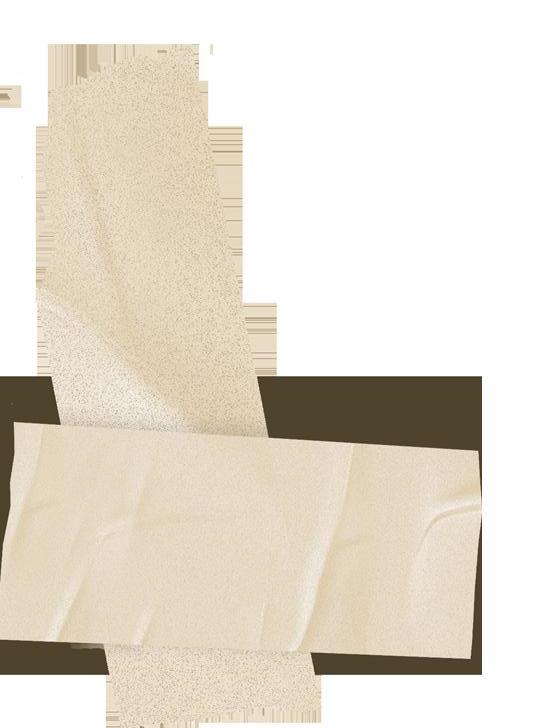
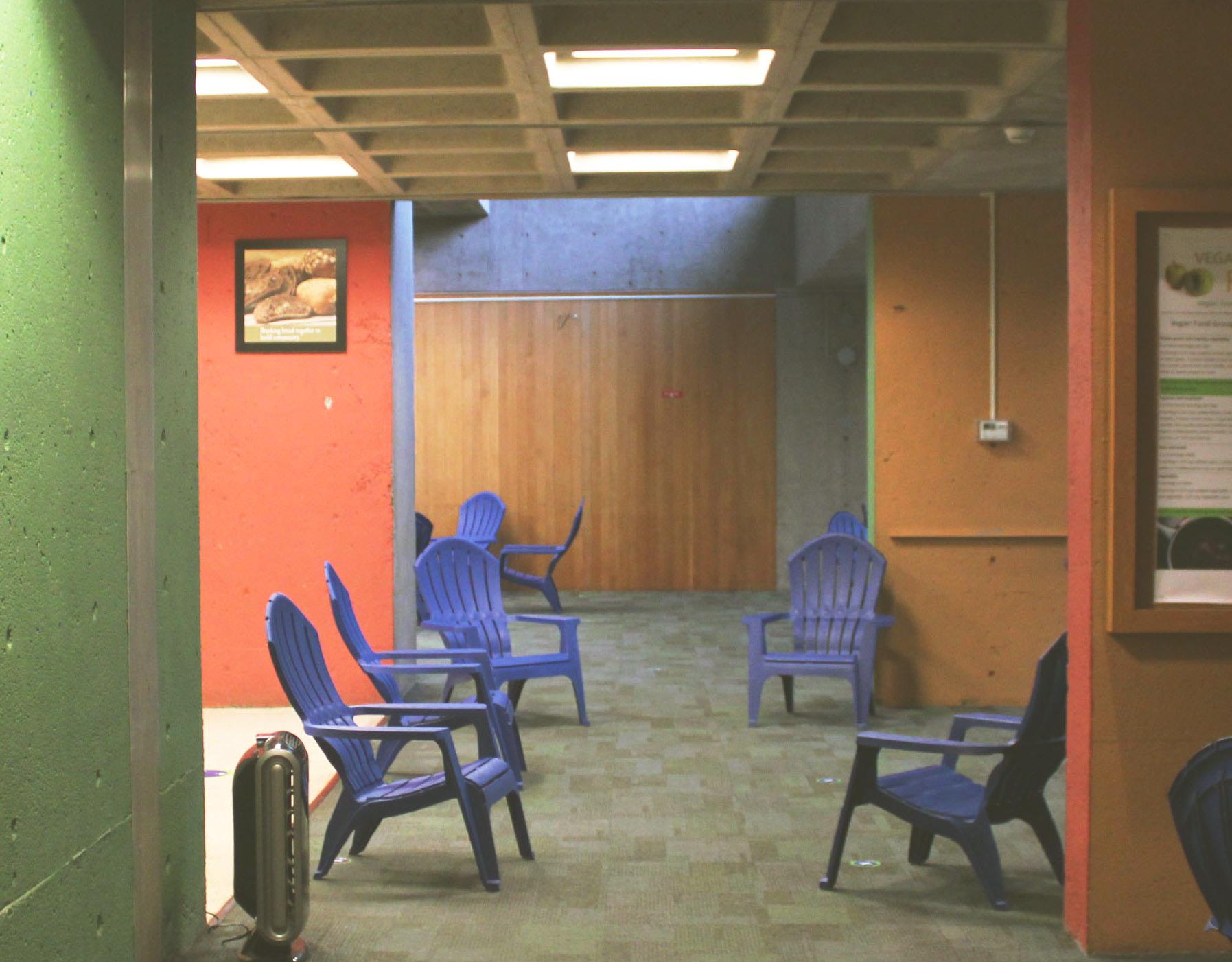
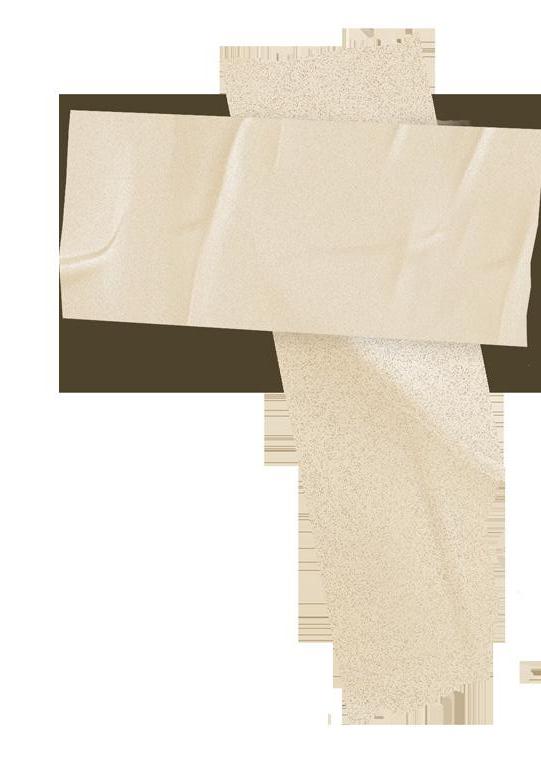

A dating app for Hamilton students
interview by Alec Nossa
Hello, my name is Will, and I made Hammy.
I taught myself to code when I was around ten. I began with Java because I wanted to code Minecraft plugins. Later on, I found myself gravitating towards graphic design. I wanted to sell my creations, so I learned web development. My first project was creating a webstore for my art.
I’ve always seen coding as a tool for expressing myself. I just like making things, and I love having projects that I can really dedicate myself to. For instance, I had two big projects in high school. The first one was a from-scratch eCommerce website for a hair company. The second was a scheduling app. My school had this ridiculous two-week schedule. It was confusing, so I made an app that allowed students to view their personal schedule.
Where did the idea for Hammy come from?
I broke my ankle longboarding at the end of last semester. It sucked; I could barely walk. I was so bored — there was nothing to do, and I barely knew anyone. I was using Tinder a lot, but after a while, I got really frustrated with the app. Most users weren’t on campus, and I knew that I was kind of being manipulated by the Tinder algorithm. I didn’t want my feed to be arbitrarily filtered, and I knew that there were a lot of people that the app was just not showing me.
I was also placed in housing with all the fall semester transfer students. I saw how hard it was for all of us to integrate into the Hamilton community and how unnatural and inorganic COVID made their social lives. Everyone was using Tinder, and, for the most part, it wasn’t really working. I wanted to make something that would allow anyone a gateway into the Hamilton community.

What was the beginning of the development like?
I remember making a Jodel post asking people if they would be interested. The response was pretty positive, so I consulted a close friend of mine and he convinced me to begin the development process. It started out as a weekend ritual, but over time, the project grew, and it progressively started to become more and more serious.
I was developing and designing Hammy alone, though, I did have a close group of friends that helped me with the process. We would sit down and chat about features and bugs. I like being able to just sit down and implement things the way I see them, but I don’t think I would have been able to do it without support.
In terms of actually making it, I get most of my Hammy work done during all-nighters. It’s an incredibly fulfilling process — that is, when I have the stamina. Working on it at night also means that I won’t have to take it down when users are active. I usually start off by making a goal, like a few bug fixes or a feature implementation. From there, it’s a whole twelve-hour stretch devoid of commitments and distractions – ie. bliss
What do you want Hammy to be?

Definitely more than just a dating app. I want to make it about friends and community — an all-in-one. I talk a lot about Tinder, but I don’t want Hammy to be viewed as an alternative because it’s not. Hammy’s supposed to be tailored for students and, hopefully, for far more than just dating and hookups. I want it to be a tool that anyone can use for just some good oldfashioned human interaction, and whether that be romantic or platonic is entirely up to the user. There’s still quite a bit of work and pivoting to be done, but that’s the ultimate idea.
What are your future plans?
There are so many things I want to do, it’s hard to find the time with school and stuff, but I’ve already made it this far. I’d like to get it on the app store at some point. I think that’d make it easier for students to find and use. I also, of course, want to expand it out of just a dating app. I’ve been working a lot on the new friends feed, and I’ve also been working on implementing a new unicorn feature...
Though, I guess for now, my main goal is just to spread awareness. The more people that use it the better the experience becomes for everyone. If people are interested I’d encourage them to make an account, or to follow our Instagram. I really love hearing what people think about the app. Whether that be them noticing a bug, making a suggestion, or anything else, I encourage people to reach out!


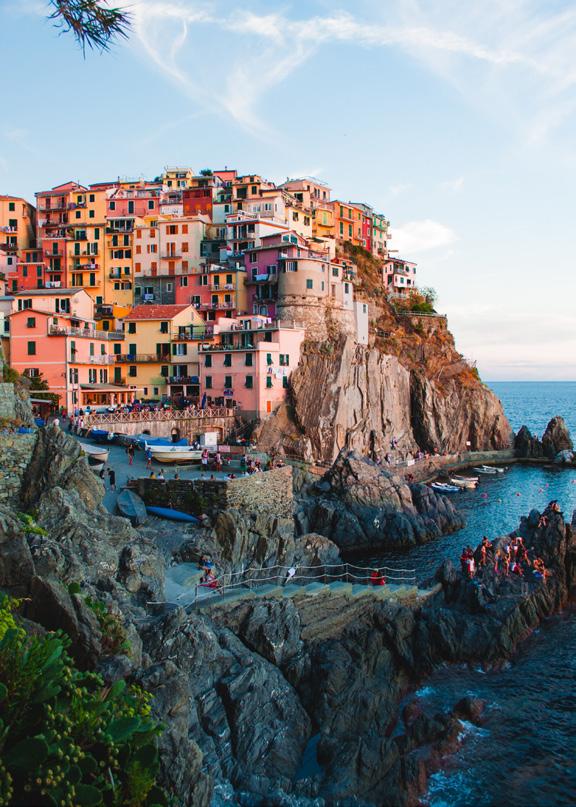
crawl around the world

bring the abroad experience to the Hill
by carlie abraham



Were you supposed to go abroad this year or last? Do you miss traveling, celebrating cultures, and/or trying new food/ drinks?
Do you need an idea for a fun Friday or Saturday night with your suitemates/ friends? Don’t stay stationary… instead travel, eat and drink ~around the world~ during a night filled with appreciating and recognizing the uniqueness of different cultures.
Each suitemate/friend chooses one and becomes inspired! It’s time to utilize the common room kitchens and put your chef abilities to the test.
These food and drink recommendations are here to give you ideas about how to have fun, culturally enlightening, and fascinating weekend night that hopefully fills your travel craving.



Food idea
Ceviche is diced fish with lemon garnish and red onions, chopped cilantro, and other fresh seafood. Once all of the ingredients are combined, it’s very healthy, refreshing, and has an appetizing presentation.
Drink idea
The most famous Peruvian drink and their national drink, the Pisco Sour, is a cocktail invented in Lima. The traditional Pisco Sour consists of grape brandy, egg white, lime juice, and a little bit of sugar.
Room 1: Travel to Peru


Food idea
Tapas! Paella Valenciana: There are many ways to make delicious paella, but one way is a recipe that includes peeled large shrimp, chicken, sliced Spanish chorizo sausage, garlic cloves, onion, tomato, butter beans, green peas, green beans, capers, bell pepper, salt and cracked pepper, paprika, saffron, thyme, rosemary, and white rice. Patatas bravas: The two main components of this tapa are the patatas and the spicy Bravas sauce. The potatoes are fried in olive oil and the Bravas sauce is made from diced tomato, paprika, cayenne, red chili pepper, onion, garlic, salt, and vinegar. Once mixed it is a bright red color and is slightly spicy, which explains its name because brava translates to “strong” or “brave.” Croquetas de Jamón: This staple on the tapas menu is hard to resist making. They are lightly breaded and fried béchamel fritters with Spanish cured ham. Ingredients include olive oil, flour, milk, chicken broth, nutmeg, minced Spanish cured ham, eggs, and breadcrumbs.
Drink idea
Sangria is a classic Spanish drink often served in a pitcher-- great for sharing. It includes wine, rum, sparkling soda, and cut-up fruit. Depending on your fruit preferences and what’s in season, you can alter the fruit you choose-- there is no standard way to make sangria! It often includes lemons, limes, oranges, green apples and orange juice.
Room 2: Travel to Spain
Room 3: Travel to Indonesia
Food idea
Nasi Goreng is Indonesia’s national dish. This dish originated from Padang, Sumatra where food is often spicy and rich. It includes a sweet, thick soy sauce called “kecap” and is garnished with green onions, red chili, fried shallots, pickled cucumber, and carrots. It is also traditionally served with a fried egg. An authentic Nasi Goreng includes spice and terasi (shrimp paste), but if you cannot find the proper ingredients, stick to white rice (cold and day-old is ideal for proper texture), onion, chicken, garlic, chili, and kecap manis (sweet soy).
Drink idea
Bajigur (also known as Indonesian coffee) is a traditional, non-alcoholic Sundanese drink that is served warm. Ingredients include water, Amanprana Gula Java Brut (coconut blossom sugar), coconut milk, ground coffee, Pandan leaves, whole cloves, and a pinch of salt. Optional: Amanprana Gula Java Cacao.
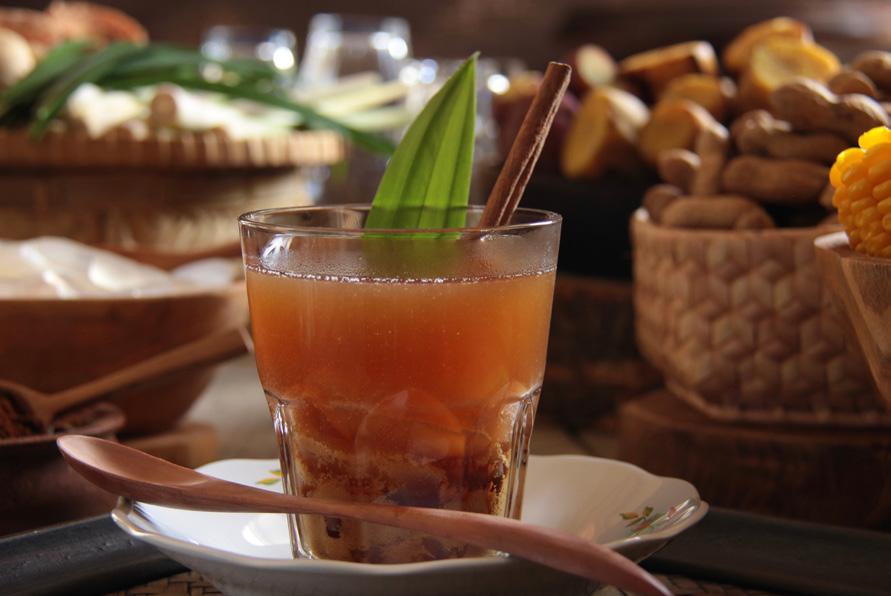
Room 4: Travel to Italy
Food idea
The world-famous ossobuco alla milanese is a veal shank, cooked slowly until it melts. It will become tender in a broth of meat stock, white wine, and veggies. Traditionally, it’s accompanied by a gremolata (lemon zest, garlic, and parsley). If you don’t have the ingredients or time to tackle the ossobuco, make a classic Italian pizza. We all may think we know what that entails, but learn about the differences between the pizzas and choose your ideal style! You can choose between a Neapolitan-style pizza, or Roman-style pizza, though many pizzas today have aspects that resemble both styles. For thick crust-lovers, stick to the Neapolitan-style pizza; it is usually smaller in diameter because the dough hasn’t been rolled out as far and it’s often more filling than Roman-style pizza. Roman-styles has a paper-thin crust and a bit of crunch. Both pizzas will include tomato sauce, mozzarella, and basil.
Drink idea
Who travels to Italy without trying an Aperol spritz? Ingredients include 1½ ounces Aperol, 3 ounces Prosecco, ¾ ounces club soda, ice, and an orange peel for garnish.
Food idea


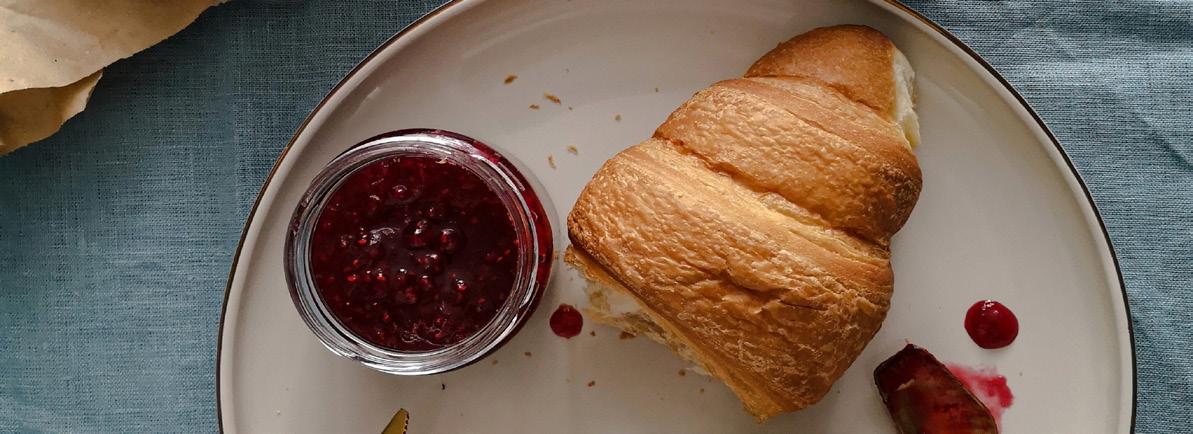

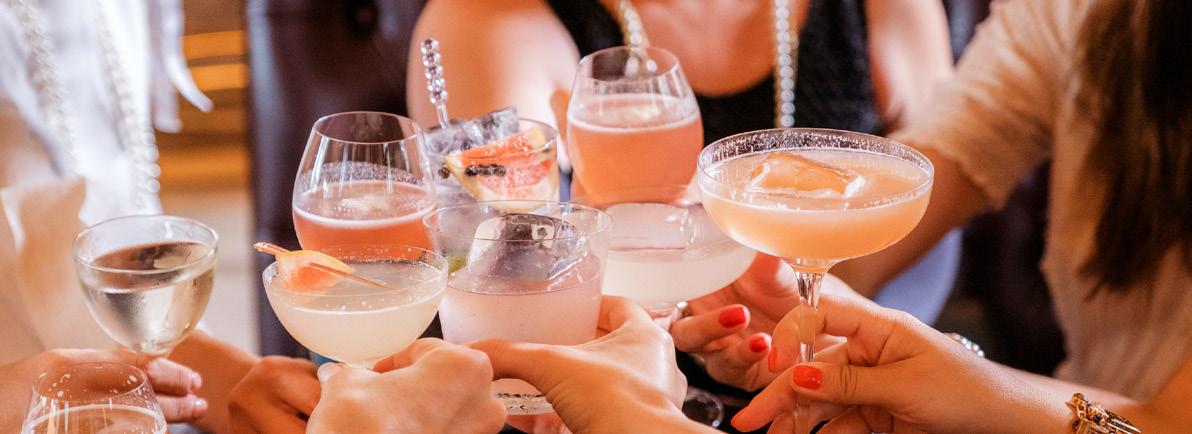
Try a croissant au beurre, or butter croissant. Ingredients include flour, sugar, salt, milk, dry yeast, softened butter and an egg. Let the dough sit and bake until golden brown.
Drink idea
Make the night extra special by finding champagne from the Champagne region in France. Méthode Champenoise is the process of secondary fermentation where yeast and rock sugar are added to traditional, indigenous blends of the Champagne region: Pinot Noir, Chardonnay, and Pinot Meunier.

